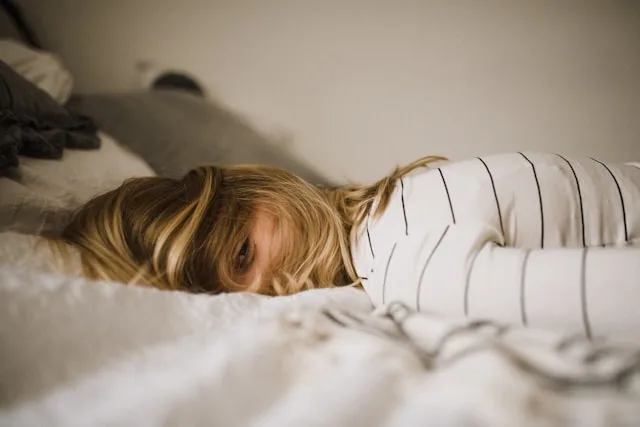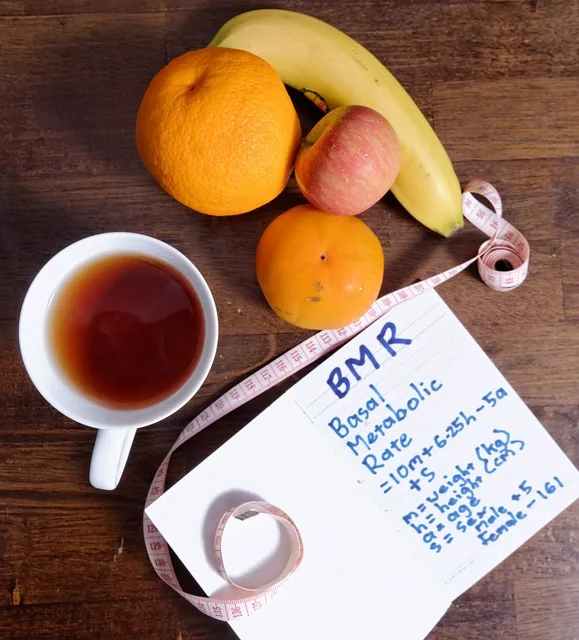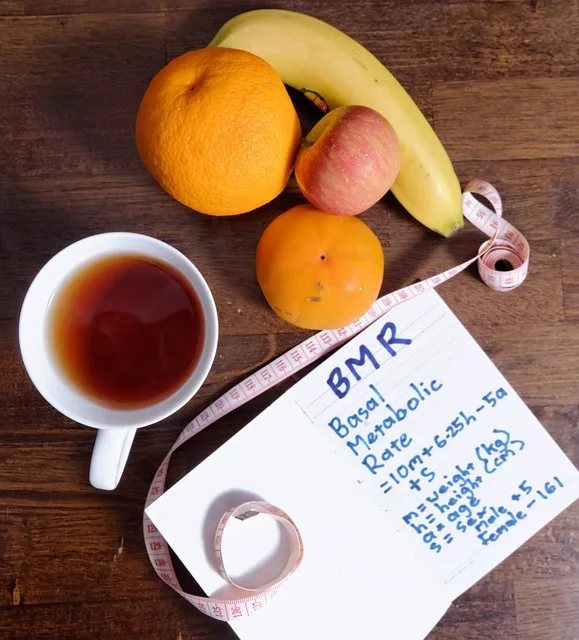Substance abuse, also known as drug abuse, is the use of a drug, such as alcohol, tobacco, and other drugs such as heroin, crystal methamphetamine, and “club drugs”, in amounts or in ways that are harmful to a person or others.
Continue reading in this article, we will explore the symptoms and causes of substance abuse, as well as how yoga can aid in the healing process.
What is Substance abuse?
Substance abuse, also known as drug abuse, refers to the habitual use of a drug or substance in a manner that is not medically prescribed. This misuse of drugs or substances can lead to physical and psychological harm, addiction, and social problems. Substance abuse can involve the use of various drugs, including alcohol, prescription medications, and illegal drugs such as cocaine and heroin. Substance abuse is a serious concern that affects millions of people worldwide, and it is important to address it to prevent further harm and promote a healthier and more fulfilling life.
Substance abuse is a serious problem that affects millions of people worldwide. It not only harms the individual, but it can also negatively impact their family, friends, and community. It is important to address substance abuse to prevent further harm and promote a healthier and more fulfilling life.
There are very different views about what constitutes substance abuse.
For some people, any use of certain substances is considered self-abuse because the substance is known to be inherently harmful. Some consider the age to be self-abuse, saying that any use of certain substances among people under the age of legal use is self-abuse, while legal see similar use among adults as ordinary use.
There are also very different views about which substances, or amounts of certain substances, are considered harmful. Other factors include a person’s condition or activities with pregnancy, certain medical conditions, and certain skill requirements – such as driving a car or operating other machinery – that would otherwise lead to acceptable moderate levels of substance abuse or can be considered as high risk.
These issues are related to moderate drinking in the U.S. are reflected in guidance provided by the Centers for Disease Control (CDC). Emphasizing that alcohol consumption is associated with a number of health risks (car accidents, violence, risky sexual behavior, high blood pressure and some cancers), the identified risks differ in different populations, including age and Medical conditions are also included. 1
The CDC acknowledges that several studies show that moderate alcohol consumption can reduce heart disease risk, yet balances this out by stating the opposite findings in other studies.2
The CDC also states that excessive alcohol consumption is responsible for 140,000 deaths each year in the United States.3
In the minds of some people, substance abuse is the use of any illegal drug, with illegal being largely defined as legal.
The United Nations World Drug Report indicates that around 5 percent of people or 230 million people worldwide have used an illegal substance, including 27 million for whom repeated use causes health problems.
In addressing only illicit drugs, these figures do not include the most commonly used drugs, some of which have the most serious health consequences, including tobacco and alcohol. This includes cannabis, which is increasingly found to have a wide range of potentially beneficial effects for those experiencing a variety of health conditions, from cancer and HIV/AIDS to insomnia and anxiety, even may also be associated with problems. 4
Thus very little is left of the precise definition of what constitutes substance abuse.
At the risk of overgeneralization, we can usefully consider substance abuse to occur when the compulsive use of a substance causes harm to oneself or others, except for the fact that many so-called foods, such as GMO corn starch or refined sugar, can fall into this definition. Even this rough definition is not without challenge, especially when the whole discussion is valuable.
Symptoms of Substance Abuse
A substance abuser versus a person observing the abuser’s actions usually perceives the behavior very differently.
When under the influence of a substance, one’s perception may be distorted to such an extent that one may not think one is impaired, one may be impulsive, or one may put oneself or others at risk of harm. Even when under the influence, there is often a denial of potentially abusive behavior or its consequences.
Many people who smoke tobacco deny its health consequences, despite overwhelming evidence that tobacco is extremely toxic, and that smoking leads to pulmonary disorders and causes cancer.
Physical symptoms
Physical symptoms of substance abuse can vary depending on the type of substance being used, the dosage, and the duration of use. Some common physical symptoms of substance abuse include:
- Changes in appetite and weight loss or gain
- Insomnia or excessive sleepiness
- Bloodshot eyes or dilated pupils
- Poor hygiene and appearance
- Shakes, tremors, or seizures
- Chronic headaches or migraines
- Persistent cough or runny nose
- Chronic fatigue or low energy levels
- Muscle aches or pain
- Sudden changes in physical coordination or balance
Behavioral symptoms
Behavioral symptoms of substance abuse can often be observed by others and can include:
- Changes in social behavior or relationships with family and friends
- Engaging in risky or dangerous activities
- Stealing or borrowing money to fund drug use
- Legal problems or involvement with law enforcement
- Changes in work or academic performance
- Neglecting responsibilities or activities previously enjoyed
- Increased secrecy or defensiveness about drug use
Psychological symptoms
Psychological symptoms of substance abuse can impact an individual’s mental health and include:
- Anxiety or panic attacks
- Depression or feelings of hopelessness
- Increased irritability or aggression
- Confusion or disorientation
- Paranoia or delusions
- Hallucinations or sensory distortions
- Memory loss or difficulty concentrating
- Mood swings or emotional instability
Causes of Drug Abuse
Use is widely considered to be the starting point of abuse. While this may be true (almost tautologically so), most people who use narcotics do not abuse them.
Thus, use cannot be considered a cause of abuse, but only an associated factor that in combination with other factors becomes the initial or the cause.
Biological factors
Biological factors play a role in substance abuse, as some individuals may be more susceptible to addiction due to genetic predisposition or differences in brain chemistry. These factors may include:
- Family history of addiction
- Genetic mutations or variations that affect brain chemistry
- Abnormalities in neurotransmitter function
- Poor impulse control
- Chronic pain or medical conditions that require prescription medications
Environmental factors
Environmental factors can also contribute to substance abuse, including:
- Stressful life events such as trauma, abuse, or neglect 5
- Peer pressure or social influence
- Easy access to drugs or substances
- Availability of prescription medications
- Poverty or financial stress
- Lack of parental supervision or support
Psychological factors
Psychological factors can also play a role in substance abuse, including:
- Mental health conditions such as depression, anxiety, or bipolar disorder
- Poor self-esteem or lack of confidence
- Difficulty managing emotions or stress
- Lack of coping skills
- Risk-taking behavior
- Trauma or unresolved emotional issues
All these come in the tendency of going from use to misuse.
Like many substances, repeated use causes changes in neurotransmitters that create a dependence on the substance for pleasure.
In addition to influencing the tendency to drink, there are also genetic factors.
Healing or Treatment
Here there are two meanings of treatment or healing:
- Prevent use or abuse
- Addressing the health effects caused by abuse
Substance abuse can have serious health consequences, with the effects of excessive alcohol and other drugs on the brain and other organs being well documented.
The first step in treatment is to stop using the substance.
Depending on the substance and the individual’s overall condition, there are an infinite number of methods offered for this behavior change, including:
- Self discipline
- Participation in a self-help recovery program such as Alcoholics Anonymous or Narcotics Anonymous, psychotherapy (especially cognitive behavioral therapy, family therapy)
- In-patient treatment that may include medications (such as methadone in the treatment of opiate addiction)
Since the bodymind is a whole organism, substance abuse cannot be fully addressed without addressing the physical, mental, and emotional aspects of the disease.
The physical health toll of substance abuse often has severe effects on internal organs, especially the brain, liver, and heart.
Healthy nutrition, which may require nutritional counseling and support, is an essential component of restoring healthy function to these organs and one’s overall physiology. So is exercise, with which yoga has so much to offer.
Most high-quality inpatient and residential substance abuse treatment programs offer fully integrated mental health treatment services, among other services, that include a twelve-step group process, nutrition, exercise, and healthy future planning.
Mental health treatment services may include support services such as individual and group counseling, medication, and case management. These services are provided rapidly within a recovery model that has high confidence – some say hope – that the person recovering can make a full recovery.
Thus, along with addressing matters of home (a safe and stable place to live) and health, the individual also addresses the larger purpose of his or her life, which includes meaningful daily activities and a healthy network of community support.
Yoga exercises can be part of these recovery strategies.
Substance Abuse Healing with Yoga
Yoga has been shown to have numerous benefits for individuals recovering from substance abuse. 6 4
Incorporating yoga into a substance abuse recovery plan can enhance the chances of successful recovery and long-term sobriety.
Yoga is increasingly part of the mainstream of recovery services, even in relatively conservative institutions such as the Veterans Administration of America. Where until recently, yoga was considered a purely alternative medicine, but more as an integral part of recovery services.
It is believed to be higher than that, especially for those involving the concomitant illnesses of substance abuse and PTSD. 7
Yoga asana practices provide healthy individuals with a healthy way of living in their bodies with self-acceptance and self-affirmation, to feel the intensity of their physicality free of harmful substances, and a new (or for the first time) wholeness. To discover the feeling and vitality free from substance abuse.
Yoga and recovery programs are now widely available, including in the U.S. The Veterans Administration Center as well as venerable yoga institutions such as the Kripalu Center for Yoga and Health, the Esalen Institute and Yoga Journal Conferences.
Just as people free of substance abuse issues find yoga a means to stay free of tension in the midst of stressful situations, it provides a way for those free of substance abuse issues to more easily tolerate the impulses that substance abuse causes. can cause consumption.
Rather than a narrowly prescribed set of asana practices for all individuals in recovery, yoga for recovery should draw from a full palette of yoga poses, offering practices that resonate with the unique situations of an individual student or client. Especially considering asana and pranayama practices. Indicated or contraindicated for other conditions and person’s intentions.
Self-affirming holistic visualizations can be integrated into these practices as proactive tools to advance healing properties that can aid in recovery.
Benefits of yoga for substance abuse recovery
Yoga is a mind-body practice that originated in ancient India and involves a combination of physical postures (asanas), breathing techniques (pranayama), and meditation.
Yoga has gained popularity worldwide due to its numerous health benefits, reducing stress, anxiety and depression, improving emotional regulation, promoting mindfulness and self-awareness, improved flexibility and balance, and increased strength and endurance. 8
Yoga can be a valuable tool in substance abuse recovery, as it can address both the physical and psychological aspects of addiction. Some benefits of yoga for substance abuse recovery include:
- Stress reduction: Yoga can help individuals in recovery manage stress, which is often a trigger for substance abuse.
- Improved physical health: Yoga can help improve physical health by increasing strength and flexibility, reducing chronic pain, and boosting immune function.
- Improved mental health: Yoga can help individuals in recovery manage depression, anxiety, and other mental health conditions.
- Improved self-awareness: Yoga can help individuals in recovery become more aware of their thoughts, emotions, and physical sensations, which can aid in identifying triggers and developing coping strategies.
- Increased mindfulness: Yoga can help individuals in recovery become more present and mindful, reducing the risk of relapse.
Specific yoga practices for substance abuse recovery
There are various yoga practices that can be beneficial for individuals in substance abuse recovery. These practices include:
- Hatha yoga: A physical form of yoga that involves various postures and breathing techniques.
- Restorative yoga: A gentle form of yoga that involves holding postures for an extended period, allowing the body to relax and release tension.
- Mindfulness meditation: A form of meditation that involves becoming aware of the present moment, accepting it without judgment, and redirecting the mind when it wanders.
- Pranayama: Breathing exercises that can help individuals in recovery manage stress, anxiety, and other emotions.
Yoga poses
There isn’t a “one-size-fits-all” approach when it comes to yoga poses for substance abuse recovery. The specific poses that are most beneficial may vary depending on an individual’s needs and circumstances. While there are many yoga poses that can be beneficial for individuals in substance abuse recovery, here are 10 poses that are particularly effective:
- Child’s Pose (Balasana): This pose helps release tension in the back, shoulders, and neck, while also calming the mind. To perform this pose, start on your hands and knees, then sit back on your heels while stretching your arms forward.
- Downward-Facing Dog (Adho Mukha Svanasana): This pose stretches the back, hamstrings, and calves while also strengthening the arms and shoulders. To perform this pose, start on your hands and knees, then lift your hips up and back while straightening your arms and legs.
- Warrior II (Virabhadrasana II): This pose strengthens the legs and hips, while also improving balance and concentration. To perform this pose, stand with your feet hip-distance apart, then step one foot back and turn it out to a 90-degree angle. Bend your front knee and extend your arms out to the sides.
- Tree Pose (Vrksasana): This pose improves balance and concentration, while also strengthening the legs and core. To perform this pose, stand with your feet hip-distance apart, then lift one foot and place it on the inside of your opposite thigh. Press your foot into your thigh and bring your hands together at your heart.
- Pigeon Pose (Eka Pada Rajakapotasana): This pose helps release tension in the hips and lower back, while also promoting relaxation. To perform this pose, start on your hands and knees, then bring one knee forward and place it behind your wrist. Extend your opposite leg back behind you, then lower your torso down to the ground.
- Bridge Pose (Setu Bandha Sarvangasana): This pose strengthens the back and legs while also promoting relaxation. To perform this pose, lie on your back with your knees bent and feet on the ground. Lift your hips up towards the sky while pressing your feet and arms into the ground.
- Fish Pose (Matsyasana): This pose stretches the chest and neck while also promoting relaxation. To perform this pose, lie on your back with your legs extended and arms at your sides. Lift your chest up towards the sky while placing the top of your head on the ground.
- Seated Forward Fold (Paschimottanasana): This pose stretches the hamstrings and lower back while also promoting relaxation. To perform this pose, sit on the ground with your legs extended in front of you. Reach your arms up towards the sky, then fold forward from the hips and reach towards your toes.
- Head-to-Knee Pose (Janu Sirsasana): This pose stretches the hamstrings and lower back while also promoting relaxation. To perform this pose, sit on the ground with one leg extended, and the other leg bent with the foot placed on the inner thigh of the extended leg. Reach your arms up towards the sky, then fold forward from the hips and reach towards your toes.
- Corpse Pose (Savasana): This pose promotes relaxation and mindfulness. To perform this pose, lie on your back with your arms and legs extended. Close your eyes and focus on your breath, allowing your body to completely relax.
Yoga sequence
Here is a yoga sequence that may be helpful for individuals in substance abuse recovery:
- Child’s pose (Balasana): Begin in a kneeling position and gently lower your upper body forward until your forehead touches the ground. Stretch your arms out in front of you or place them alongside your body with your palms facing up. Take slow, deep breaths and focus on releasing tension in your body.
- Cat-cow stretch: Come to your hands and knees in a tabletop position. On an inhale, arch your back and lift your head and tailbone toward the ceiling (cow pose). On an exhalation, round your spine and bring your chin to your chest (cat pose). Repeat for several breaths, moving slowly and mindfully.
- Downward-facing dog (Adho Mukha Svanasana): From tabletop position, tuck your toes under and lift your hips up and back, coming into a downward-facing dog pose. Keep your hands shoulder-width apart and your feet hip-width apart. Relax your head and neck and take several deep breaths.
- Warrior I (Virabhadrasana I): Step your right foot forward between your hands and come up to standing. Turn your left foot out at a 45-degree angle and square your hips forward. Raise your arms overhead and gaze up toward your hands. Hold for several breaths before repeating on the other side.
- Triangle pose (Trikonasana): From warrior I, straighten your right leg and reach your right hand down toward your right shin or ankle. Raise your left arm up toward the ceiling and gaze up toward your left hand. Hold for several breaths before repeating on the other side.
- Cobra pose (Bhujangasana): Lie on your stomach with your hands under your shoulders. On an inhale, press your hands into the floor and lift your chest up, keeping your elbows close to your body. Keep your shoulders relaxed and your gaze forward. Hold for several breaths before lowering back down.
- Seated forward fold (Paschimottanasana): Sit on the floor with your legs extended in front of you. On an exhalation, fold forward over your legs, keeping your spine straight. Reach your hands toward your feet or ankles, or rest them on your shins. Hold for several breaths.
- Legs up the wall (Viparita Karani): Sit with your right hip against a wall and swing your legs up onto the wall. Lie on your back with your arms at your sides and your palms facing up. Relax and breathe deeply for several minutes.
- Corpse pose (Savasana): Lie on your back with your arms at your sides and your palms facing up. Close your eyes and breathe deeply, relaxing your body completely. Stay in this pose for several minutes, focusing on the sensation of relaxation in your body.
Remember to move slowly and mindfully, and to listen to your body. It’s also important to work with a certified yoga instructor or healthcare provider to ensure that you’re practicing the poses safely and effectively for your individual needs and circumstances.
Breathing techniques
Breathing techniques can be a powerful tool for managing stress and promoting relaxation, both of which can be helpful for individuals in substance abuse recovery. Here are a few breathing techniques that may be beneficial:
Deep belly breathing
- Sit or lie down in a comfortable position.
- Place one hand on the belly and one hand on the chest.
- Take a slow, deep breath in through the nose, feeling your belly expand.
- Exhale slowly through the mouth, feeling your belly contract.
- Repeat for several breaths, focusing on the sensation of your breath moving in and out of your body.
Alternate nostril breathing
- Sit in a comfortable position with your back straight and the eyes closed.
- Use the right thumb to close your right nostril.
- Inhale slowly through the left nostril for a count of 4.
- Hold the breath for a count of 4.
- Use the right ring finger to close your left nostril and release the thumb from the right nostril.
- Exhale slowly through the right nostril for a count of 4.
- Inhale through the right nostril for a count of 4.
- Hold the breath for a count of 4.
- Use your right thumb to close your right nostril and release your ring finger from your left nostril.
- Exhale slowly through the left nostril for a count of 4.
- Repeat for several cycles, focusing on the sensation of your breath moving in and out of your body.
4-7-8 breathing
- Sit or lie down in a comfortable position.
- Exhale completely through your mouth, making a whooshing sound.
- Close the mouth and inhale through the nose for a count of 4.
- Hold the breath for a count of 7.
- Exhale slowly through your mouth, making a whooshing sound, for a count of 8.
- Repeat for several cycles, focusing on the sensation of your breath moving in and out of your body.
Ocean breathing
- Sit in a comfortable position with your back straight and your eyes closed.
- Take a slow, deep breath in through your nose.
- Exhale slowly through your nose, making an “ocean” sound by constricting the back of your throat.
- Repeat for several cycles, focusing on the sound and rhythm of your breath.
Kapalabhati breath
- Sit in a comfortable position with your back straight and your eyes closed.
- Take a deep breath in through your nose.
- Exhale quickly and forcefully through your nose, contracting your abdominal muscles to push the air out.
- Relax your abdominal muscles to inhale passively.
- Repeat for several cycles, focusing on the sensation of your breath and the movement of your abdominal muscles.
Square breathing
- Sit or lie down in a comfortable position.
- Inhale slowly through the nose for a count of 4.
- Hold the breath for a count of 4.
- Exhale slowly through your nose for a count of 4.
- Hold the breath for a count of 4.
- Repeat for several cycles, focusing on the sensation of your breath and the counting.
Bottom line
Substance abuse is a serious issue that can have devastating consequences on an individual’s physical, behavioral, and psychological health. Substance abuse can have multiple causes, including biological, environmental, and psychological factors.
Yoga can be a valuable tool in substance abuse recovery, providing numerous benefits such as stress reduction, increased self-awareness, and improved physical health. Incorporating specific yoga poses and breathing techniques into a substance abuse recovery plan can be an effective way to manage cravings, reduce stress and anxiety, and promote overall wellness.
While yoga can be a helpful addition to a substance abuse recovery plan, it’s essential to seek professional help and guidance. Substance abuse is a complex issue that requires a comprehensive treatment approach that may include medication-assisted treatment, counseling, and other evidence-based therapies.
Working with a healthcare provider or addiction specialist can help individuals in recovery to identify the underlying causes of their substance abuse and develop a personalized treatment plan. Incorporating yoga and other mindfulness practices can be an effective way to manage cravings, reduce stress and anxiety, and promote overall wellness, but it should always be done in conjunction with professional treatment.
With the right support and tools, it is possible to overcome substance abuse and lead a healthy, fulfilling life. Seeking professional help and incorporating evidence-based therapies, including yoga, can be a crucial step towards recovery.
- Alcohol and Public Health. Available here: https://www.cdc.gov/alcohol/fact-sheets/moderate-drinking[↩]
- Nutrients. 2020 Jan; 12(1). doi: 10.3390/nu12010108. Benefits and Risks of Moderate Alcohol Consumption on Cardiovascular Disease: Current Findings and Controversies. Gemma Chiva-Blanch and Lina Badimon[↩]
- https://www.cdc.gov/alcohol/features/excessive-alcohol-deaths[↩]
- Wimberly AS. “How yoga impacts the substance use of people living with HIV who are in reentry from prison or jail: A qualitative study.” Complement Ther Med. 2019 Dec;47:102074. doi: 10.1016/j.ctim.2019.03.022. Epub 2019 Mar 29. PMID: 31780010; PMCID: PMC6886577.[↩][↩]
- Cherestal, S., & Herts, K. L. (2021). “Trauma―Focused Treatment for PTSD With Comorbid Psychosis: A Case Report.” Clinical Case Studies, 20(3), 201–216. doi: 10.1177/1534650120980069.[↩]
- Kuppili PP, Parmar A, Gupta A, Balhara YPS. “Role of Yoga in Management of Substance-use Disorders: A Narrative Review.” J Neurosci Rural Pract. 2018 Jan-Mar;9(1):117-122. doi: 10.4103/jnrp.jnrp_243_17. PMID: 29456355; PMCID: PMC5812135.[↩]
- Flanagan JC, Korte KJ, Killeen TK, Back SE. “Concurrent Treatment of Substance Use and PTSD.” Curr Psychiatry Rep. 2016 Aug;18(8):70. doi: 10.1007/s11920-016-0709-y. PMID: 27278509; PMCID: PMC4928573.[↩]
- Khoury L, Tang YL, Bradley B, Cubells JF, Ressler KJ. “Substance use, childhood traumatic experience, and Posttraumatic Stress Disorder in an urban civilian population.” Depress Anxiety. 2010 Dec;27(12):1077-86. doi: 10.1002/da.20751. PMID: 21049532; PMCID: PMC3051362.[↩]














